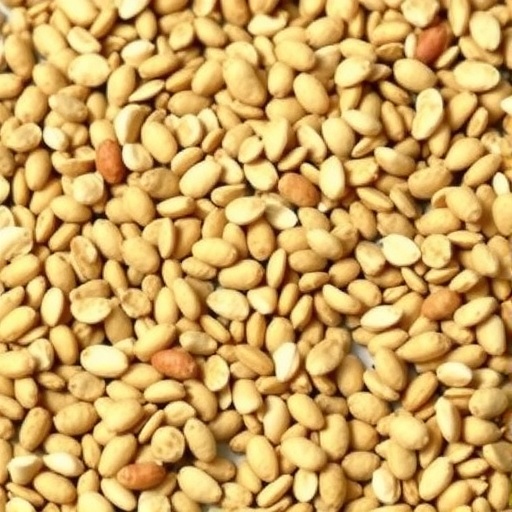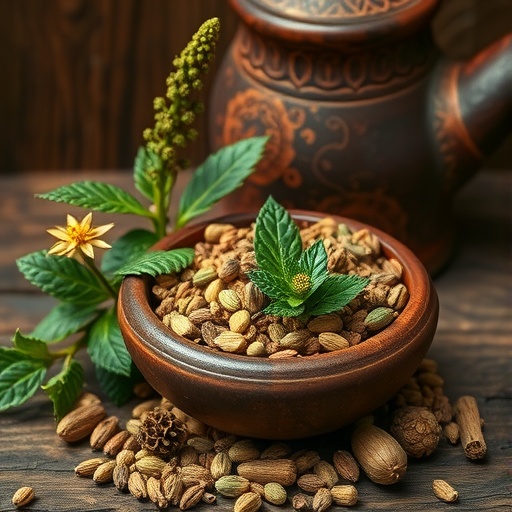In an era where antibiotic resistance threatens global health, a breakthrough from researchers in China offers a promising new avenue to combat one of the most insidious environmental reservoirs of resistant bacteria: aquaculture wastewater. This innovative study unveils the development of a novel, cost-effective catalyst that efficiently eradicates antibiotic-resistant bacteria (ARB) from wastewater streams associated with aquaculture, a sector rapidly expanding worldwide due to rising food demands.
Central to this advance is the creation of a bismuth ferrite (BiFeO₃, often abbreviated as BFO) catalyst that is uniquely doped with biochar derived from peanut shells. Biochar, a carbon-rich material produced through the pyrolysis of biomass, enhances the catalytic properties of BFO by introducing surface defects and oxygen vacancies—microscopic imperfections that dramatically increase the catalyst’s reactivity. The integration of agricultural waste like peanut shells not only adds an element of sustainability but also transforms what would be discarded material into a high-performance functional component.
When this peanut shell biochar-doped BiFeO₃ composite is combined with peroxymonosulfate (PMS), a powerful oxidizing agent frequently used in advanced oxidation processes, the system exhibits remarkable bactericidal activity. Laboratory assessments demonstrate that the PMS in conjunction with just 5% biochar-loaded BFO can reduce antibiotic-resistant bacterial populations by nearly two orders of magnitude within a mere 10-minute window. The reaction kinetics are impressive, with a calculated reaction rate constant of approximately 0.4401 min⁻¹, signaling rapid effectiveness for potential practical deployment.
The mechanistic underpinnings of this high efficacy lie in the catalyst’s ability to activate PMS to generate various reactive oxygen species (ROS). These include sulfate radicals (SO₄•⁻), superoxide radicals (O₂•⁻), and singlet oxygen (¹O₂), alongside high-valent iron-oxo species. Such reactive intermediates collectively orchestrate a violent oxidative assault on bacterial cells. This multifaceted oxidative stress compromises the integrity of bacterial membranes, increasing their permeability and ultimately inducing cell death. Moreover, the oxidative cascade overwhelms bacterial defense systems, ensuring that resistant strains are effectively neutralized.
This research highlights the significance of surface defects and oxygen vacancies introduced by the peanut shell biochar doping. These active sites serve as crucial platforms for PMS activation, enhancing the generation and stability of reactive species. The result is a synergistic relationship between the catalyst and oxidant that drives unparalleled ARB inactivation performance compared to undoped systems or conventional treatments.
One of the major practical advantages of this technology is its scalability and cost-effectiveness. Peanut shells, an agro-waste product abundant in many regions, are inexpensive and readily accessible. The synthesis of the biochar-doped BiFeO₃ composite does not require complex instrumentation or costly reagents, making it attractive for widespread use in aquaculture settings, especially in resource-limited locations where antibiotic resistance is most problematic.
Beyond efficacy, the catalyst displays considerable durability. After undergoing four consecutive reuse cycles, the 5% biochar-BFO catalyst retained over 60% of its initial ARB-removal efficiency. This indicates strong potential for repeated usage without significant degradation in performance, a crucial factor for real-world environmental applications where treatment costs and operational consistency are major concerns.
The versatility of this system was further demonstrated in tests against several antibiotic-resistant strains of Escherichia coli harboring resistance genes. The catalyst-activated PMS system consistently achieved substantial bacterial inactivation within minutes, underscoring its broad-spectrum applicability. This is particularly relevant given that wastewater from aquaculture often contains a cocktail of diverse resistant microorganisms, complicating treatment strategies.
Contextualizing this advancement within the broader aquaculture industry reveals its critical importance. Aquaculture is one of the fastest-growing food production sectors, responsible for nearly half of the fish consumed globally. To prevent disease outbreaks in dense populations, antibiotics are extensively used, often leading to raw or inadequately treated wastewater releasing ARB into natural ecosystems. This propagation poses direct risks to environmental biodiversity and indirectly threatens human health through contaminated food chains and water sources.
Traditional disinfection techniques such as chlorination and ultraviolet (UV) irradiation have demonstrated limitations in completely removing resistant bacteria and in some cases generate harmful disinfection byproducts. The biochar-BiFeO₃ catalyst paired with PMS presents a next-generation technology that is not only highly effective but also environmentally friendly, as it avoids toxic secondary pollution and leverages the natural properties of biochar derived from waste.
Experts involved in the study emphasize the dual benefit of their approach. The usage of agricultural waste like peanut shells for catalyst fabrication exemplifies a circular economy model, turning waste streams into valuable materials that address pressing environmental and health challenges simultaneously. This strategy aligns with current trends toward sustainable and green chemistry solutions in environmental remediation.
The team behind this innovation advocates for the deployment of this catalytic system in treatment facilities handling aquaculture wastewater, envisioning its role in mitigating the spread of antimicrobial resistance. Given the growing prevalence of ARB in diverse sectors and the limited effectiveness of current remediation methods, such technologies represent critical tools in the global fight against antibiotic resistance.
This research contributes significantly to the field of biochar applications, expanding its established role beyond soil amendment and carbon sequestration to active pollutant and microorganism elimination. It also highlights the interdisciplinary collaboration between environmental science, materials engineering, and microbiology necessary to develop and optimize advanced water treatment technologies capable of addressing contemporary challenges.
Ultimately, the biochar-doped BiFeO₃ catalyst activated by peroxymonosulfate marks a pioneering step in sustainable antibacterial water treatment strategies. Its rapid action, durability, cost-effectiveness, and environmental compatibility position it as a viable solution for controlling antibiotic-resistant bacteria in aquaculture—and potentially beyond—fuelling hope for mitigating a growing global health crisis with innovative science rooted in natural materials.
Subject of Research: Not applicable
Article Title: Peroxymonosulfate activation by peanut shell biochar-doped BiFeO3 composite to remove antibiotic resistant bacteria from aquaculture wastewater
News Publication Date: 2-Sep-2025
References:
Lu, F., Chen, Y., Huang, J., Lin, J., Zhang, Y., Xu, L., … & Gong, H. (2025). Peroxymonosulfate activation by peanut shell biochar-doped BiFeO3 composite to remove antibiotic resistant bacteria from aquaculture wastewater. Biochar, 7(1), 1-19.
Image Credits: Fengru Lu, Yingxin Chen, Jinlian Huang, Jingui Lin, Yanqiong Zhang, Lijie Xu, Lu Gan, Muting Yan & Han Gong
Keywords: Antibiotics
Tags: advanced oxidation processesantibiotic-resistant bacteria eliminationaquaculture wastewater treatmentbismuth ferrite catalystcost-effective wastewater treatmentenvironmental health solutionshigh-performance catalysts for wastewaterinnovative wastewater managementmicrobial resistance in aquaculturepeanut shell biocharperoxymonosulfate as oxidizing agentsustainable agricultural waste utilization





